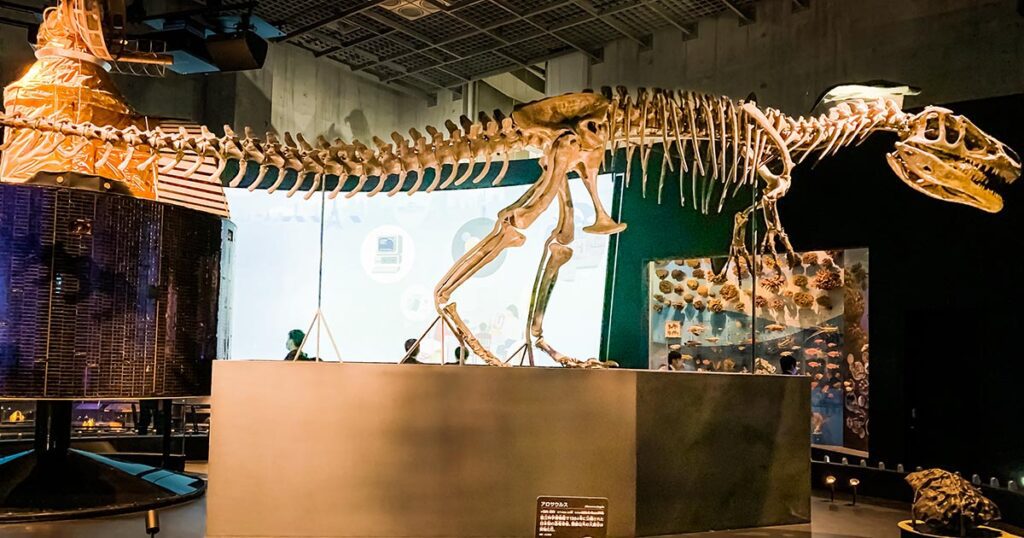Nestled in the heart of Ueno Park, Tokyo, the National Museum of Nature and Science stands as a testament to the incredible progress and discoveries in the world of science. This popular museum offers visitors a unique opportunity to explore a wide range of subjects, from biology and geology to astronomy and physics, all under one roof. In this blog post, I will take you on a journey through the captivating exhibits of The National Museum of Nature and Science and discuss why it is a must-visit destination for science enthusiasts and curious minds alike.
Table of Contents
History of The National Museum of Nature and Science:
Established in 1877, the National Museum of Nature and Science has been dedicated to fostering scientific knowledge and inspiring curiosity for well over a century. Originally named the Ministry of Education Museum, it has undergone several transformations and expansions over the years, ultimately evolving into the comprehensive institution we know today. As one of Japan’s oldest and most esteemed museums, it has played a pivotal role in shaping the country’s scientific landscape.
Permanent Exhibits: Unraveling the Mysteries of Nature
1. Japan Gallery:
The Japan Gallery transports visitors back in time, exploring the diverse natural history of the Japanese archipelago. This exhibit showcases the unique geological features, flora, fauna, and climate that make Japan a truly exceptional environment. From extinct animals like the Japanese wolf to the iconic cherry blossoms, visitors are immersed in the rich biodiversity of the nation.
2. Global Gallery:
The Global Gallery takes a more comprehensive approach to the study of nature and science, offering exhibits that span various scientific disciplines. One standout display is the “History of Life” section, where visitors can trace the evolution of life on Earth through an extensive collection of fossils, including the complete skeleton of a Tyrannosaurus rex. Other notable exhibits include the Space and Aerospace Science sections, where visitors can learn about celestial bodies, the universe’s origins, and the history of space exploration.
Temporary Exhibits: A Dynamic Space for Learning
In addition to its permanent exhibits, the National Museum of Nature and Science regularly hosts temporary exhibitions on diverse scientific topics. These rotating exhibits allow visitors to delve deeper into specific areas of interest, ensuring there is always something new to discover.
Interactive & Educational Programs:
Understanding the importance of hands-on learning, the museum offers a variety of interactive and educational programs for visitors of all ages. These programs range from interactive workshops to lectures by renowned scientists, all designed to ignite the curiosity and passion for learning within each participant.
The Digital Archives Project:
As a hub for scientific research and education, the National Museum of Nature and Science has taken great strides to digitize and preserve its extensive collection of specimens, documents, and artifacts. Through its Digital Archives Project, the museum ensures that these invaluable resources are accessible to researchers and the general public alike.
In conclusion, I must say that the National Museum of Nature and Science is more than just a museum; it is a living, breathing space dedicated to fostering a deeper understanding and appreciation for the natural world and the scientific discoveries that shape our lives. Whether you’re a seasoned scientist, an aspiring student, or a casual visitor, the museum’s diverse exhibits and engaging programs offer an unforgettable experience for all who walk through its doors. So next time you find yourself in Tokyo, make sure to add this awe-inspiring destination to your must-visit list.
Opening hours:
09:00-17:00
Closing hours:
Monday
Closed on Mondays and open on national holidays but closes the following Tuesday.
Admission fee:
Adult: 630 yen
High School & Younger: free
Access:
Nearest station: JR Ueno Station
A 5- minute walk(Park Exi).
Address:
Uenokoen, Taito, Tokyo 110-0007, Japan
Official Website:
Read my detailed guide to the Science Museum here.
